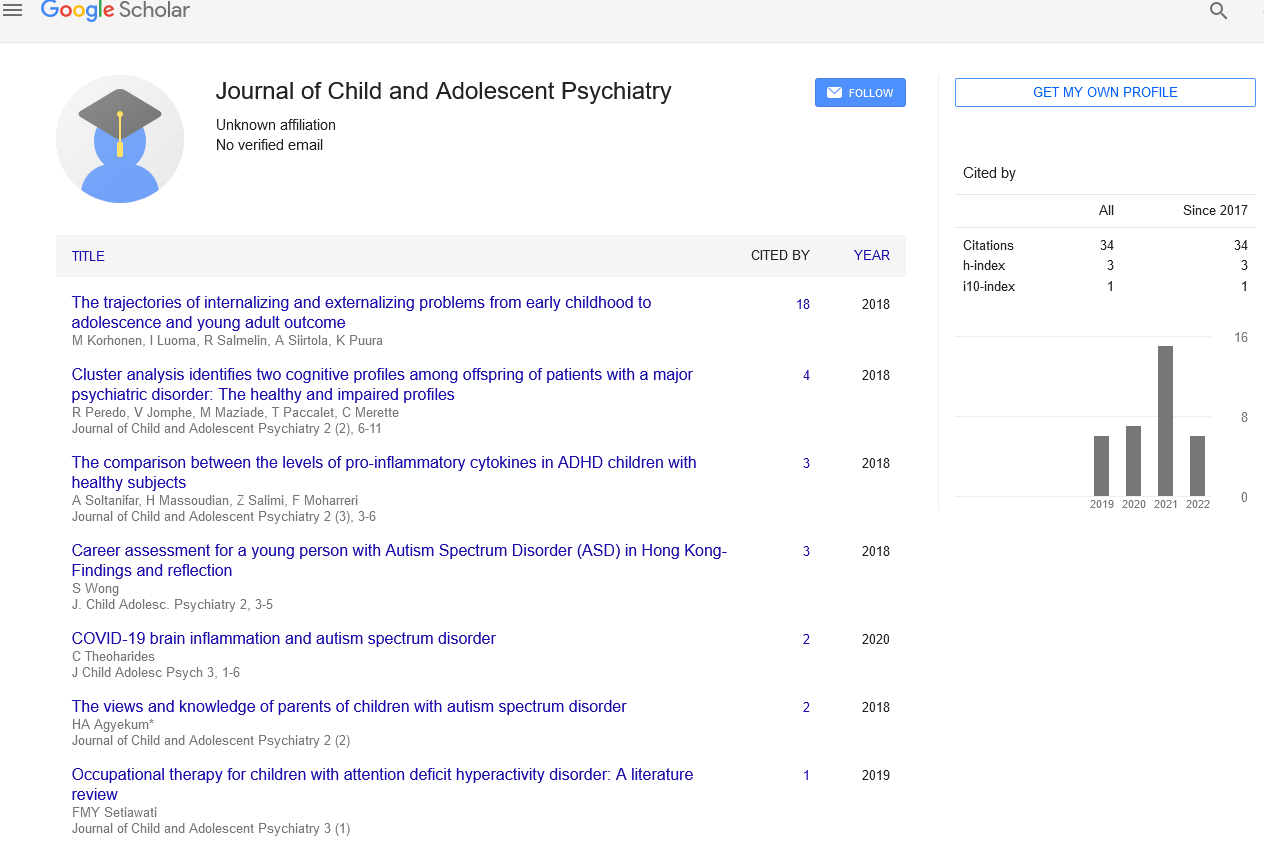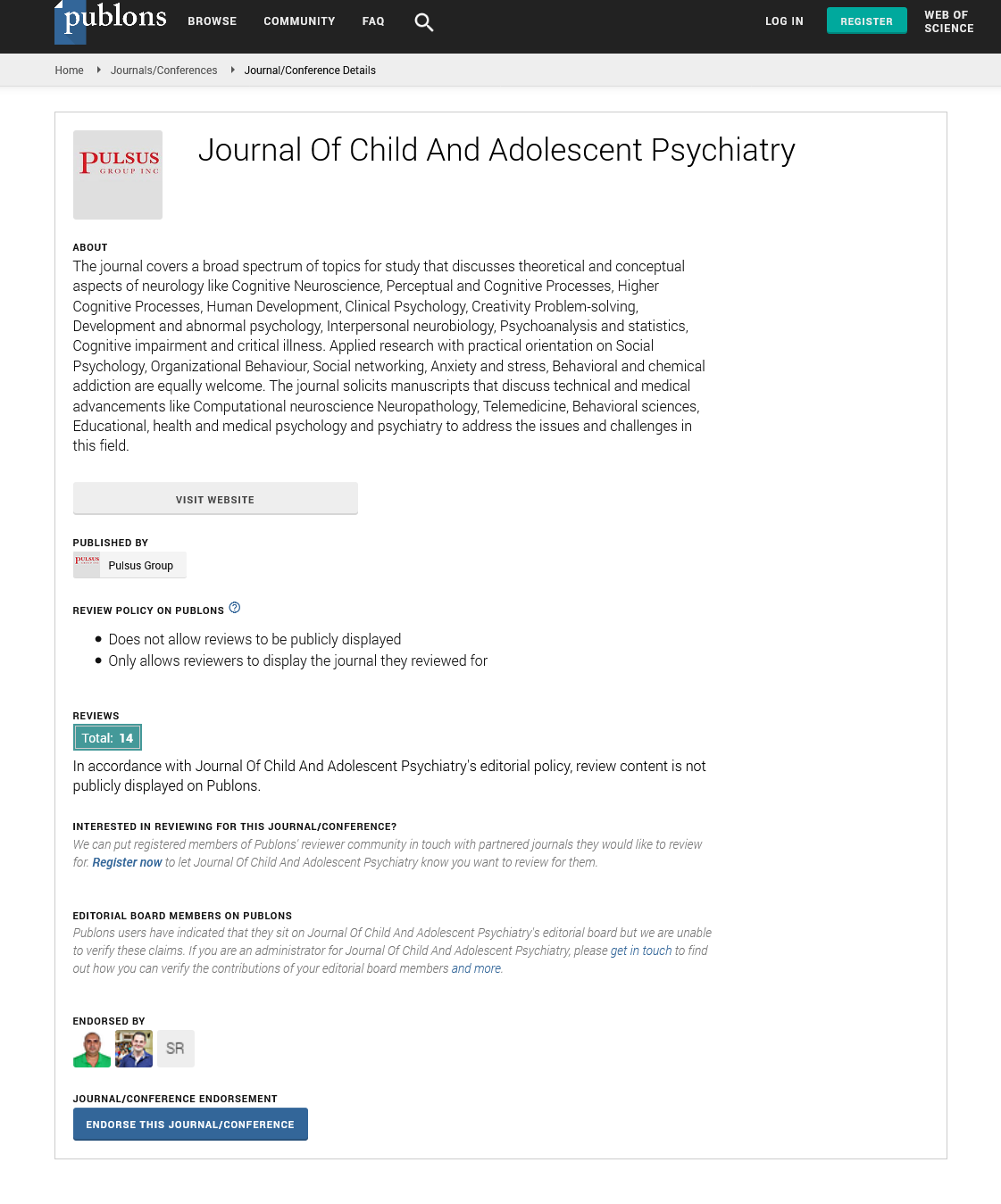An editorial note on anxiety disorders in adolescents
Received: 16-Sep-2021 Accepted Date: Sep 30, 2021; Published: 07-Oct-2021
Citation: Wang M. An editorial note on anxiety disorders in adolescents. Child Adolesc Psych 2021;5(4):1.
This open-access article is distributed under the terms of the Creative Commons Attribution Non-Commercial License (CC BY-NC) (http://creativecommons.org/licenses/by-nc/4.0/), which permits reuse, distribution and reproduction of the article, provided that the original work is properly cited and the reuse is restricted to noncommercial purposes. For commercial reuse, contact reprints@pulsus.com
Description
Worries, fears and misery often cluster together alongside substantial grievances as a rule, given the impressive cross-over, youngsters and adolescents with socially incapacitating fears, worries or misery were traditionally 'lumped' into a relatively broad-band category of emotional disorders of childhood. In the course of the last 15-20 years the 'splitters' have been more persuasive depicting the enormous number of specific anxiety and depressive disorders included in ICD-10 and DSM-IV. This attempt to increase diagnostic precision has its drawbacks. Some individuals have difficulties that do not quite match any set of operationalized diagnostic criteria, while others with broad-band symptomatology qualify for several labels simultaneously.
Epidemiology
Around 4-8% of children and adolescents have clinically significant anxiety disorders that cause substantial distress or interfere markedly with everyday life. This makes tension problems the second commonest gathering of mental issues among children and adolescents. Second only to disruptive behavioral disorders and ahead of ADHD and depressive disorders. For every child or adolescent with an anxiety disorder there are several others in the community with multiple fears or worries but who do not get classified as having The bunching of uneasiness issues in families might reflect hereditary impacts as well as. The impacts of sex and age on pervasiveness differ starting with one tension problem then onto the next.
Causation
Anxiety disorders run in families: affected parents are more likely to have affected children arid vice versa. Twin studies suggest moderate heritability but the pattern does not point to different genes for each anxiety disorder.
Instead, what is inherited seems to be a broad vulnerability to many anxiety disorders (though post-traumatic stress disorder and obsessive compulsive disorder seem to be special cases). An inherited vulnerability to a broad range of anxiety disorders may extend even further encompassing depression and irritability as well. Shared genetic liability to depression and generalized anxiety disorder is one indication of particularly close links between these two disorders that are sometimes jointly described as 'distress disorders'. The bunching of uneasiness issues in families might reflect hereditary impacts as well as parent-to-child transmission through learning and modelling. Catastrophic but rare life events are clearly relevant to post-traumatic stress disorder. Other anxiety disorders can also be related to adverse life events, including relatively common experiences such as permanently breaking up with a best friend going through a period of financial hardship as a result of parental unemployment, or experiencing parental separation and divorce. Youngsters and teenagers might adapt to a solitary such occasion, however create a passionate disorder when exposed to several such events in combination or rapid succession emphasising the importance of thinking about the cumulative impact of life experiences.
Many theories suggest that anxiety is due to experiencing threat (while depression is due to experiencing loss). According to Bowlby's influential formulation based on attachment theory, anxiety, and particularly separation anxiety, often arises from threatened or actual separations from key attachment figures (for example. when parents punish their children by threatening to send them away). Psychodynamic theories formulate the threat in terms of intrapsychic conflicts. Classical conditioning can potentially explain the way in which previously neutral stimuli can, by association with a frightening experience, become fear-evoking in themselves. Operant conditioning theory predicts subsequent avoidance of these stimuli (thereby blocking the opportunity for natural exposure and the extinction of the fear). Temperament also seems relevant.






